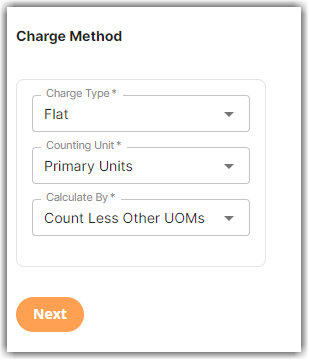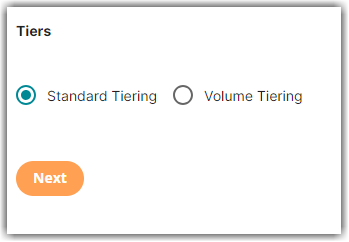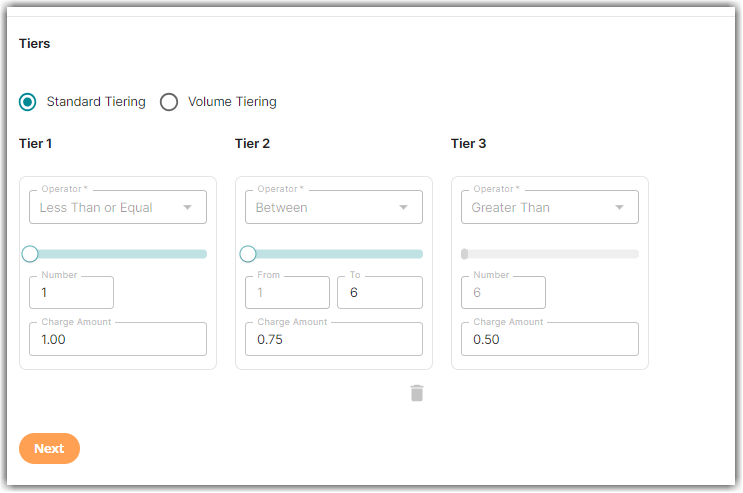Creating a Standard Tiered Rate for Each Pick
This article is about the Billing Manager app, not the Billing Wizard in 3PL Warehouse Manager. To learn about the Billing Wizard, please refer to the articles in the Billing Setup.
This article provides a step-by-step guide to creating a rate that applies a standard tiered fee for each individual pick. For further guidance, you can also watch the instructional video here.
Start by learning about Standard tiering
For a deeper understanding about tiered rates, please refer to our article on Understanding Standard vs Volume Tiering.
- Navigate to Rates in the left navigation menu.
- Next, select Rate List.
- Then, click + Create Rate in the upper right corner.

- Select the following options as shown below on the Create New Rate window. Then, click Continue.
Automated rate > Simple Rate > Tiered Rate
- Provide basic details such as Rate Name, Rate Description, and Charge Label.
- Select Receiving for the Transaction Type and Handling for the Charge Category. Then, click Continue.

- Select the following for each field on the Charge Method section before clicking Next.
Charge Type: Flat
Counting Unit: Primary Units
Calculate By: Count Less Other UOMsCount Less Other Unit of Measures (UOMs) Pre-Condition
For a deeper understanding of the Count Less Other UOMs method of calculation, please refer to our article on Count Less Other UOMs Pre-Conditions.
To discern the difference between Count and Count Less Other UOMs, consult our article on Understanding Count vs Count Less Other UOMs.
What does the above charge method mean?
This means that we're only going to count the individual units for this order that do not fall within a package, inner pack, master pack, or pallet—only individual primary units outside of any one of those other units of measure.
- Select ‘Standard Tiering’ in the Tiers section. Click Next.

- Follow a sample guide below to understand how standard tiering works. Click the + icon to add another tier.
Please note that the operator for each tier is locked. You can only edit the charge amount for each tier and set the value for your 1st and 2nd tier. The value you enter in the To field of the 2nd tier will serve as the parameter for your last tier.

- Click Skip on the Rate-Level Rules Section.
- Click Yes, Save to save the rate.
- Select Yes as desired if you want to add this to a rate sheet.
